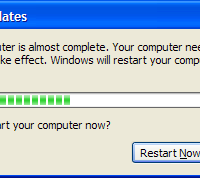Patch management is a process of updating a software package by changing its instructions to fix any issues there might be. This might be common knowledge to many, but how many actually know what such issues can lead to? And what are the benefits when these are fixed?

1. Keep control over your system by avoiding remote code execution
A major issue that patches fix is remote code execution. Some flaws, such as buffer overflows, can allow users on a remote workstation to ‘force’ your machine to run code of their choice. In turn, this can be exploited by attackers to have your machine install any malware they want. When this happens the hacker can:
- Take full control of your machine.
- Use your machine as a beachhead to attack other machines on your network.
- Use your machine to attack other machines outside your domain making it appear like your organization is the one launching the attacks.
- Spy on anything that happens on the infected machine(s).
- Spy on any data passing through the network that’s visible to the compromised machines.
If a machine is compromised, sensitive and confidential data – such as the credentials used to log onto your bank account, customer credit card numbers or any proprietary information your business owns – could be stolen. It is therefore a must for every organization to act to prevent such attacks.
2. Keep your systems in working order by avoiding Denial of Service
Some flaws might seem minor and not worthy worrying about; one example is having a certain sequence of data causing an application to crash. However, even the most irrelevant of things can severely impact our network and company. Cybercriminals often launch Denial of Service attacks. These are designed to stop a targeted organization from operating normally. They are carried out by having a large number of machines send as many requests as possible to any service the intended victim is running. Denial of Service attacks are often a form of hacktivism or a form of blackmail whereby the attacker keeps the system hostage until a ransom is paid. Making sure the network is properly patched is all it takes to prevent these attacks.
3. Keep private information private by ensuring you do not suffer information disclosure
If network vulnerabilities are exploited by a hacker, confidential data could be leaked. A web application that displays account information to the owner of that account for example, could be forced to display information about any account if certain types of queries are made by hackers. Exploiting a vulnerability may also allow people to authenticate with their account but manipulate settings on another user’s account, allowing them to change that account’s password and effectively hijack it. Needless to say, the consequences can be very serious.
Running timely and proper patch management can help you prevent these attacks. A patch management solution and a vulnerability scanner will allow you to do with effortlessly and in one go.
